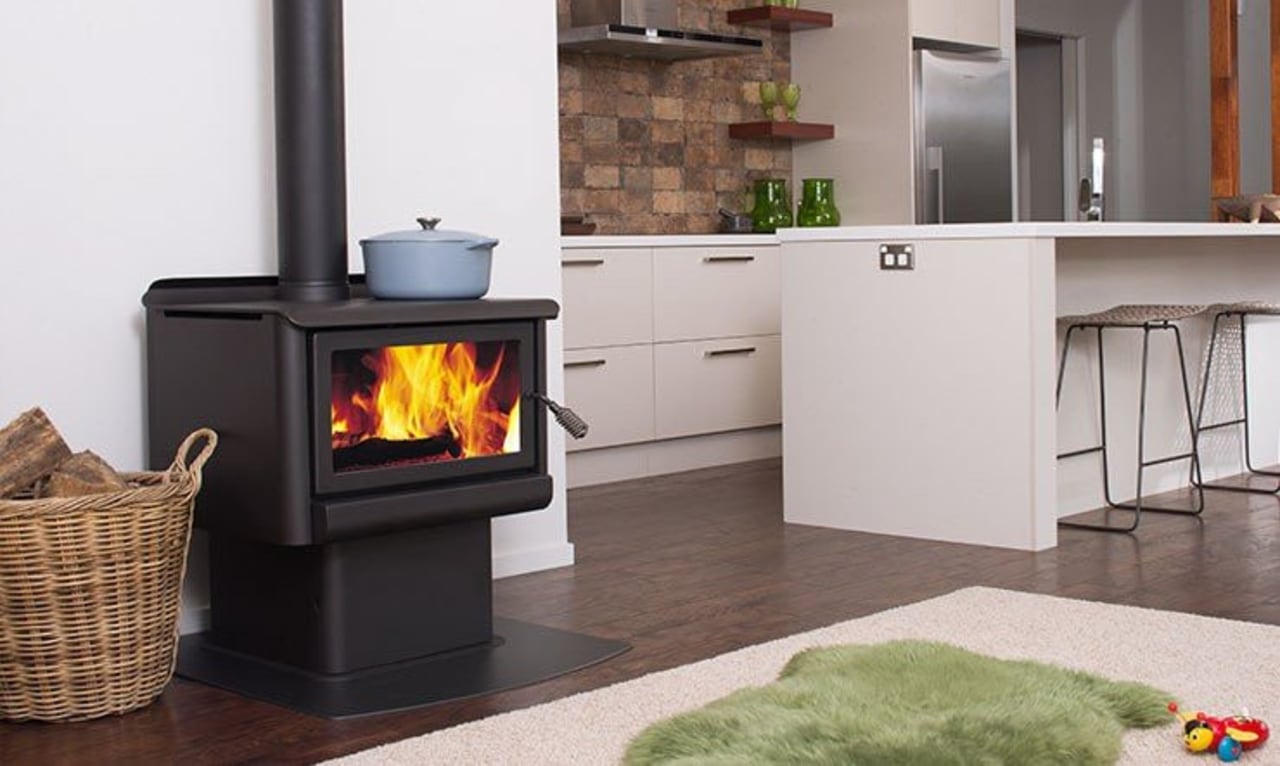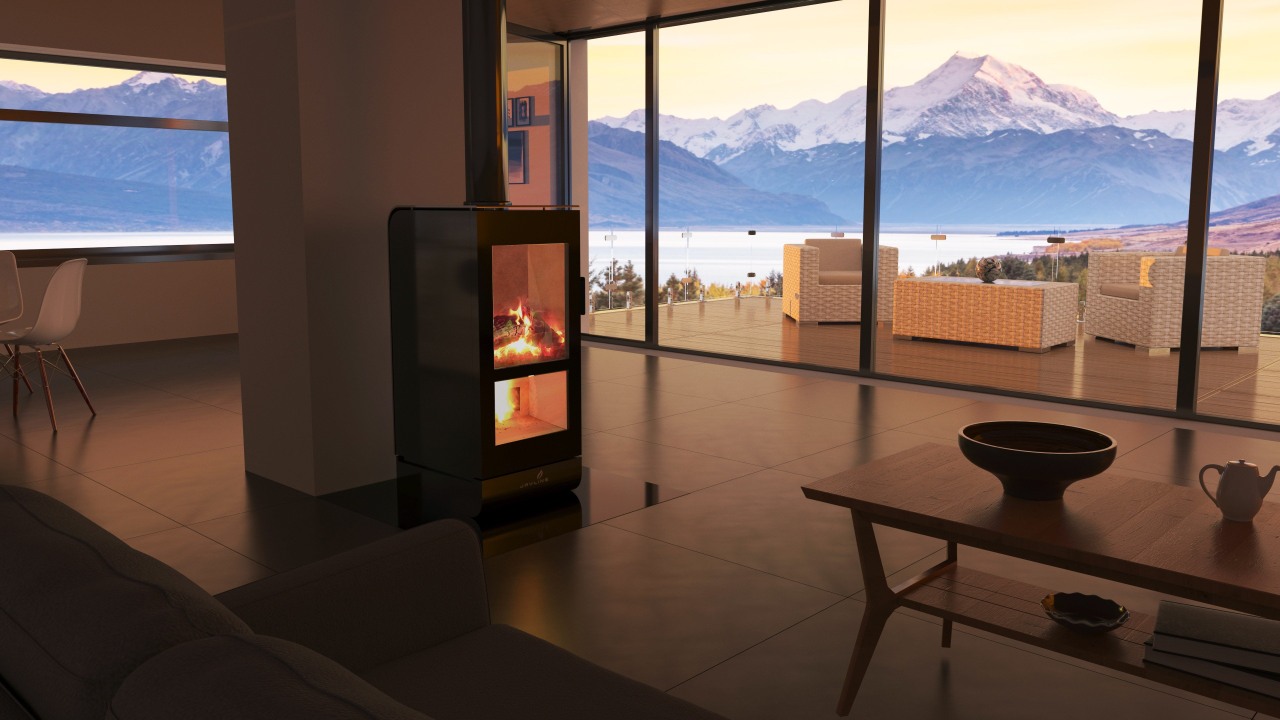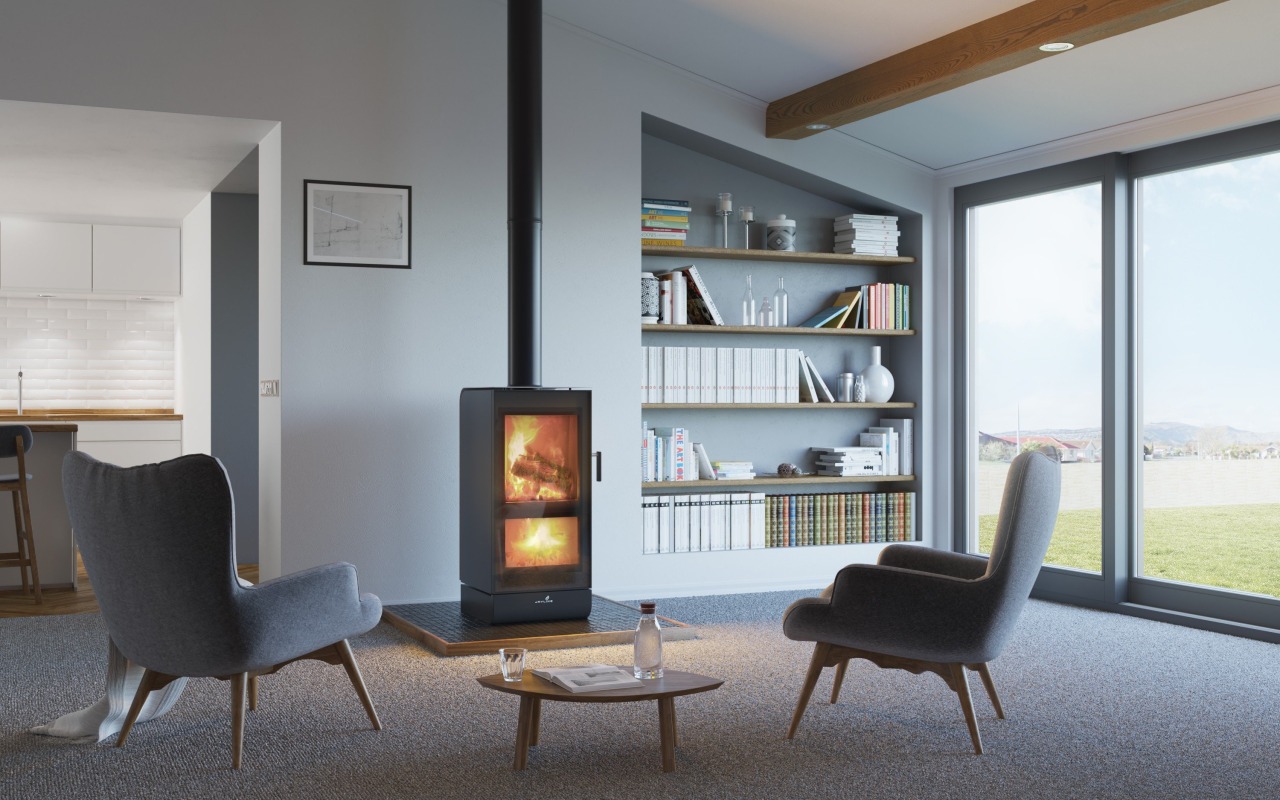6 things to consider when buying a wood fire
Impulse buying is very real, but when it comes to purchasing a heating option for your home, slow and steady is the best way to go
Your home heating method requires a lot of consideration. With so many options out there, it can be overwhelming. One great option is the classic wood fire.
We've consulted Greg Walsh, a heating professional from Retail Links for some tips on things to think about before choosing a wood fire.
1. Environmental impact
"Although you may have had a wood fire for many years, the times have changed and so have the environmental restrictions on the emissions released by domestic solid fuel burners. Historically we could smoulder our fires, reduce our fuel consumption and get overnight burn with no problem – the cost was paid to the environment," Walsh points out.
But as we become more aware of our impact on the environment, that's changed.
"Now the focus on preserving our environment shifts the cost back to clean burner behaviour to ensure cleaner burning and a responsible view towards sustaining our country's clean air."
2. Cost
It might be tempting to rush out and buy the first, cheapest heating option you come across, but this could end up costing you more in the long run.
Saving money by purchasing a cheap or discount heater is not usually the best option. Customers are often lulled into purchasing a heating option with the lowest upfront cost, without considering the running costs, nor understanding the optimum way of economising the operation.
Make sure to factor in costs such as fuels, too.
"If the wood fire is destined to serve you for 5+ years, it’s worth factoring in the operating cost in addition to the capital outlay of getting it installed. Gas, Electricity, Pellets and Diesel are all fuels which are controlled by third party suppliers, whereas most Kiwis have access to wood for either free (ie. gathering your own) or at a very reasonable cost."

3. Space
In order to maximise your burner's functionality, you should make sure its size fits the available space correctly, as Walsh rightly points out:
"With a wood fire, it’s important to ensure the appliance correctly fits the setting. Choose the correct kilowatt output for the room or home size you want to heat. It’s better to run a smaller fire box harder (with a bigger fire in it) than to install a larger burner and only run it at half capacity – this would result in a very inefficient burn putting out less heat and increasing wear on fire components and flue."
4. Operation
In order to ensure the longevity of your wood fire, it's important to follow the operational instructions for your model.
"When purchasing a new fire, even if you've owned one previously, it’s important to note that many fires have been redesigned and operate differently. Some new burners on the market perform extremely well, however they require the loading and operating instructions to be closely adhered to in order to get consistently good results. It will all be in the operating instructions so this is a good place to start."
Still having trouble? Do some research or get in contact with a professional.
"Some manufacturers are also offering online video support which clearly show you how to get the best out of your burner, they can also aid in troubleshooting common issues. If in doubt, contact your fire installer to assist with any technical issues in the first instance."
5. Fuel type
Like your car and body, what goes into it determines how it runs.
"What goes into your fire significantly determines what comes out. If the homeowner sources their good wood in the off season and allows it to correctly dry under cover, away from the rain, and with sufficient ventilation to breathe; this is the best method of preparing fuel for burning in the winter months," says Walsh.
Compare this to wood that still has a high internal moisture content (>25%) or with a high sap/gum content like old man pine, which will result in a smouldering fire. Symptoms such as a large amount of smoke while burning, excessive soot on the fire window, fast degrading of the internal fire parts, and lots of ash remaining after the burn are evidence that your wood is not ready to burn.
Using the wrong type of fuel won't just hurt your wood fire, it can be dangerous, too.
"Its important to never use treated timber, these wood products have often been cured with CCA which is Copper Chromium and Arsenic designed to prevent wood from breaking down. Burning this wood results in these noxious chemicals turning to gas and circulating around your neighbourhood and even inside your own home."
6. Maintenance
Last but not least, maintenance is essential to prolonging the life of your heater.
"Installing a wood burner is not the end of the story when it comes to getting years of great performance from your solid fuel appliance – like everything you invest in, you want it to last a long time. Your fireplace requires routine maintenance as sacrificial parts wear out, to ensure its safe and correct operation."
Maintenance is also essential to meeting the conditions of your warranty.
Wood fires typically have a firebox warranty ranging from 5 up to 15 years. These are usually conditional upon proof of maintaining your burner with annual chimney sweeps and parts inspections. In the event your burner fails, you'll want to provide records of servicing by an approved technician to easily verify you've met the conditions of the warranty.
Getting a technician to check over your heater is another important part of maintenance.
"In addition to an annual sweeping, your technician should check your door seals, fire bricks, baffles, air tubes and any other sacrificial fire part as many of these are designed to improve the efficient operation of the burner and protect the structural integrity of the firebox itself."
As you can see, there's a lot to think about and do when purchasing and owning a new wood fire. But it's all essential to making sure you get the most out of it and ensure you get your money's worth.
Story by: Loukas Tsitsiridakis
Home kitchen bathroom commercial design
Reflection and repose
9 tile shapes and finishes that think outside the square
White cloud, blue sky


